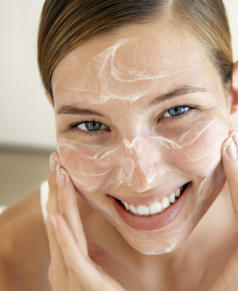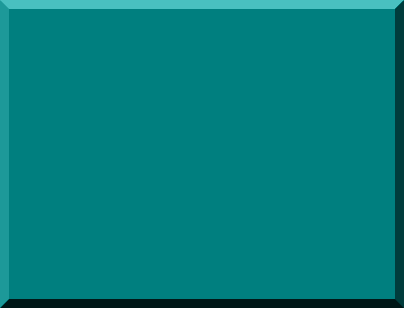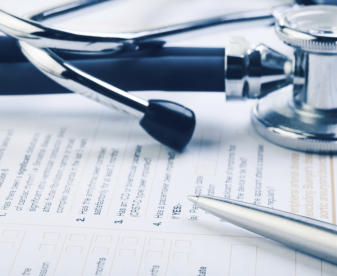

I


Attention-Deficit/Hyperactivity Disorder
Attention-Deficit/Hyperactivity Disorder
Most children with ADHD receive a diagnosis during the elementary school years. For an
adolescent or adult to receive a diagnosis of ADHD, the symptoms need to have been
present prior to age 12.
ADHD symptoms can appear as early as between the ages of 3 and 6 and can continue
through adolescence and adulthood. Symptoms of ADHD can be mistaken for emotional or
disciplinary problems or missed entirely in quiet, well-behaved children, leading to a delay
in diagnosis. Adults with undiagnosed ADHD may have a history of poor academic
performance, problems at work, or difficult or failed relationships.
ADHD symptoms can change over time as a person ages. In young children with ADHD,
hyperactivity-impulsivity is the most predominant symptom. As a child reaches elementary
school, the symptom of inattention may become more prominent and cause the child to
struggle academically. In adolescence, hyperactivity seems to lessen and may show more
often as feelings of restlessness or fidgeting, but inattention and impulsivity may remain.
Many adolescents with ADHD also struggle with relationships and antisocial behaviors.
Inattention, restlessness, and impulsivity tend to persist into adulthood.
How We Can Help:
• Acupuncture – Acupuncture can be extremely quick and effective in reducing the symptoms such as pain, cognitive function, nerve function and
assists in healthy sleep patterns.
• Chiropractic Manipulation – Adjustments can help realign the the spine, restoring optimal nerve function and blood flow.
• Diet / Nutritional Supplements – Diet changes are essential to reduce inflammation in the body, cutting out sugar, preservatives, caffeine etc., give
the body the best chance to Detox and begin the process of healing. Hand picked Supplements feed the body’s needs, and promote optimum health
• Neurofeedback - an effective program that allows sufferers to learn how to control body functions that may have been compromised by unhealthy,
abnormal brain waves. This program allows patients to become actively involved in his or her own recovery.
Neurofeedback techniques monitor brain wave activity, allowing our doctors to correct the waves that may be out of sync with the body’s natural
frequency, thus creating healthy, organized brain wave patterns. By doing this, the brain becomes more stable and is able to operate more efficiently.
Neurofeedback is an all natural, non-invasive way to train the brain and promote a healthy improved function.
Neurofeedback Training offers rewards through visual, auditory and tactile training or feedback. This training helps correct brainwave activity and
improves brain to body connectivity making you stronger, and creating better functionality. It is personal training for the brain!
Neurofeedback Can Improve: • Improve Brain-Body Connection • Improve Mental Clarity • Improve Concentration • Improve Healthy Sleep Patterns


Inattention Symptoms
• People with symptoms of inattention may often:
• Overlook or miss details, make careless mistakes in schoolwork, at
work, or during other activities
• Have problems sustaining attention in tasks or play, including
conversations, lectures, or lengthy reading
• Not seem to listen when spoken to directly
• Not follow through or fail to finish schoolwork, chores, or duties in
the workplace or start tasks but quickly lose focus and get easily
sidetracked
• Have problems organizing tasks and activities, such as what to do in
sequence, keeping materials and belongings in order, having messy
work and poor time management, and failing to meet deadlines
• Avoid or dislike tasks that require sustained mental effort, such as
schoolwork or homework.
• Lose things necessary for tasks or activities, such as school
supplies, tools, wallets, keys, eyeglasses.
• Be easily distracted by unrelated thoughts or stimuli
• Be forgetful in daily activities, such as chores, errands, returning
calls, and keeping appointments
Hyperactivity-Impulsivity Symptoms
• Fidget and squirm in their seats
• Leave their seats in situations when staying seated is expected,
such as in the classroom or in the office
• Run or dash around or climb in situations where it is inappropriate
or, in teens and adults, often feel restless
• Be unable to play or engage in hobbies quietly
• Be constantly in motion or “on the go,” or act as if “driven by a
motor”
• Talk nonstop
• Blurt out an answer before a question has been completed, finish
other people’s sentences, or speak without waiting for a turn in
conversation
• Have trouble waiting his or her turn
• Interrupt or intrude on others, for example in conversations,
games, or activities
Risk Factors
Scientists are not sure what causes ADHD. Like many other illnesses, a
number of factors can contribute to ADHD, such as:
• Genetics
• Cigarette smoking, alcohol use, or drug use during pregnancy
• Exposure to environmental toxins during pregnancy
• Exposure to environmental toxins, such as high levels of lead, at a young age
• Low birth weight
• Brain injuries
• ADHD is more common in males than females
Know The Difference:


Know The Difference:





- Acne Solution
- Adrenal Fatigue
- Anxiety & Depression
- Asthma & Allergies
- Autoimmune
- Cancer Support
- Chronic Pain
- Concussion
- Diabetes
- Erectile Dysfunction
- Infertility
- Fibromyalgia
- Insomnia
- Integrative Cardio
- Leaky Gut
- Low Testosterone
- Mens Health
- Migraine
- Sciatica
- Sleep Disorders
- Stroke
- Thyroid
- Weight Loss
- Womens Health


- Home
- booking an appointment
- doctors
- services
- acupuncture
- chiropractic manipulation
- ilima natural beauty products
- comprehensive laboratory
- functional medicine
- neurofeedback
- nutrition & supplements
- pediatrics
- physical & rehabilitation therapies
- smoking cessation
- ailments
- acne solution
- add&adhd
- adrenal fatigue
- anxiety & depression
- asthma allergies
- autoimmune
- crohns
- hashimotos
- lupus
- rheumatoid arthritis
- cancer support
- chronic pain
- concussion & traumatic brain injury
- diabetes
- erectile dysfunction
- fibromyalgia chronic fatigue
- infertility
- insomnia
- integrative cardio
- leaky gut
- low testosterone
- memory loss
- mens health
- migraine
- sciatica
- sleep disorders
- stroke
- thyroid
- weight loss
- womens health
- Contact























